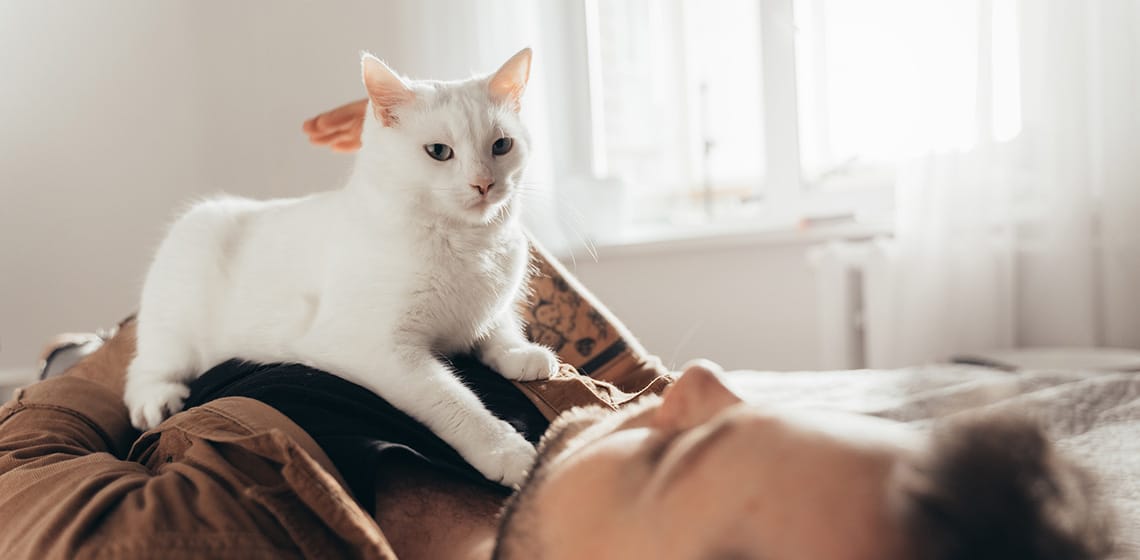
If you’re a cat parent, you may have observed your feline friend rhythmically pressing their paws on a soft surface, a behavior known as kneading. Cats usually do this on blankets, pillows, or even your lap, which may feel both endearing and puzzling. Let’s explore the reasons behind this fascinating behavior and what it reveals about your cat’s needs, emotions, and instincts.

What is Cat Kneading?
Kneading, often called “making biscuits” because of the way it resembles dough-kneading, is a common feline behavior. During kneading, cats press their front paws alternately, often purring and with a relaxed demeanor. While the reasons behind kneading aren’t fully understood, several theories offer insight into why cats exhibit this behavior.
Top Reasons Why Cats Knead
Instinct from Kittenhood
Kneading is a behavior that begins in kittenhood. When nursing, kittens knead their mother’s belly to stimulate milk flow. This action is associated with comfort and security, so adult cats may continue kneading as a comforting habit.
Marking Territory
Cats have scent glands in their paws. When they knead, they’re subtly marking their territory with their scent. This is one reason cats may knead on their favorite spots or people—they’re “claiming” you as their own!
Expressing Affection
Cats often knead on their favorite humans as a sign of trust and love. If your cat kneads on you, consider it a compliment; they feel safe and happy in your presence.
Stretching and Relaxation
Kneading helps cats stretch their paws and legs. You might notice your cat kneading after a nap or before settling into a cozy spot, as it helps them relax and prepare for comfort.
Preparing a Soft Spot to Sleep
In the wild, cats knead to flatten tall grass or leaves to create a soft, comfortable spot to rest. Domestic cats may retain this instinct, kneading to “prepare” their bedding.

Why Some Cats Knead with Claws
While kneading is generally harmless, some cats knead with their claws out, which can be painful if they’re doing it on your lap! This is often because they are more enthusiastic or excited. Providing a soft blanket for your cat to knead on can redirect this behavior safely.
Do All Cats Knead?
Not all cats knead, and some may show this behavior more than others. Cats each have unique personalities, and behaviors like kneading can vary based on their temperament, past experiences, and individual preferences.
Breeds More Prone to Kneading
Some breeds, like Ragdolls and Burmese, are known for their affectionate nature and may knead more than other breeds.
Indoor vs. Outdoor Cats
Indoor cats may knead more as a way to express comfort and security, while outdoor cats, who rely more on survival instincts, may not knead as frequently.
How to Encourage or Discourage Kneading
Provide a Kneading-Friendly Surface
Place a soft blanket or cushion in your cat’s favorite spot. If your cat enjoys kneading on your lap, consider keeping a blanket nearby to protect yourself from their claws.
Trim Their Nails
Regular nail trimming helps prevent painful kneading experiences. Just be sure to use proper nail clippers and avoid trimming too close to the quick.
Gently Redirect If Needed
If your cat’s kneading becomes uncomfortable, gently lift them onto a soft surface where they can knead freely. Avoid scolding, as this may confuse or stress them.
Understanding Other Related Cat Behaviors
Purring While Kneading
Cats often purr when they knead, showing that they are content and comfortable. This behavior is a positive sign that your cat is feeling relaxed and happy.
Kneading and Head-Butting
Many cats combine kneading with head-butting or rubbing. These are ways of marking you as “theirs” and showing affection. Head-butting is another behavior linked to scent-marking and trust.
Licking While Kneading
Some cats may also lick while they knead. This is another habit from kittenhood and signals that your cat feels safe, associating you with nurturing and comfort.
What to Avoid When Your Cat Kneads
Avoid Pushing Them Away
Cats see kneading as a natural expression of comfort and trust, so pushing them away may confuse or upset them.
Never Declaw
Declawing is highly discouraged, as it’s painful and can lead to long-term physical and behavioral issues. Instead, trim their claws regularly to make kneading more comfortable for both of you.
Avoid Overstimulating
While cats knead to show affection, too much petting or stimulation during kneading can lead to overstimulation. Some cats may bite or scratch when they feel overly stimulated, so watch for any signs of discomfort.
Interesting Cultural Beliefs about Cat Kneading
In some cultures, kneading is seen as a sign of good fortune and a harmonious home. In India, for instance, a cat kneading in your home may be considered a positive sign of comfort and stability. Such beliefs highlight the deep connection humans have with these beloved animals across cultures.
Common Myths about Cat Kneading
“Kneading Means My Cat Misses Its Mother”
While kneading begins in kittenhood, it doesn’t necessarily mean your cat misses its mother. Adult cats knead as a comfort behavior and as a way to show affection to their human family.
“Only Female Cats Knead”
Both male and female cats knead. The behavior is not related to gender; it’s simply an instinctive behavior that brings them comfort.
“Cats Only Knead When They’re Hungry”
While kittens knead to stimulate milk flow, adult cats knead for many reasons unrelated to food, such as marking territory, expressing affection, and relaxation.
How Kneading Reflects Your Cat’s Personality
Playful Cats
Cats with playful, affectionate personalities may knead more frequently and with greater enthusiasm. They might even incorporate “play bites” or nuzzling.
Shy or Anxious Cats
For more reserved cats, kneading might happen only in private moments. These cats may knead quietly in their beds, showing they’re comfortable but more cautious.
Confident Cats
Cats who feel secure and confident may knead openly and often on people, expressing their trust and attachment to their human family.
Conclusion
Cat kneading is a unique and endearing behavior that signifies comfort, trust, and affection. When your cat kneads on you or around the home, it’s a positive sign of their contentment. Embrace this natural expression of feline happiness, and make your home even more welcoming with cozy spots for your pet to knead. Petamore is here to provide the guidance and products you need to keep your cat happy and comfortable in every aspect of their life.




